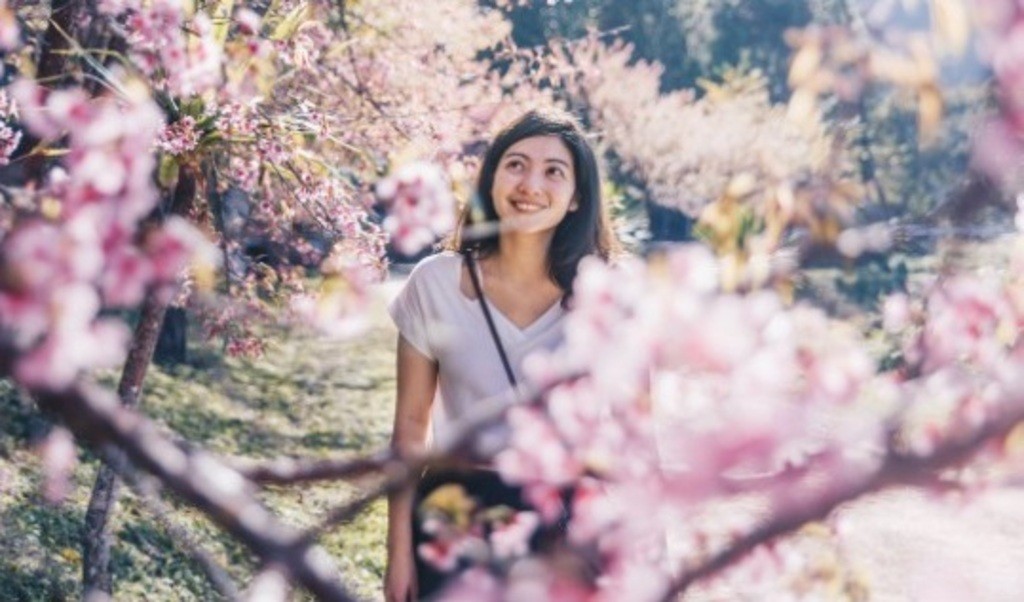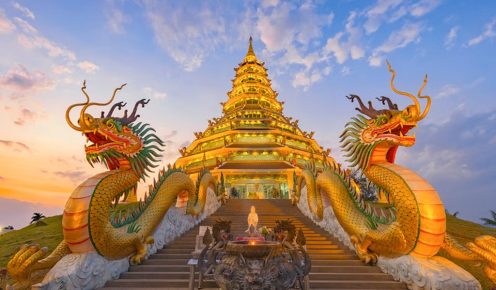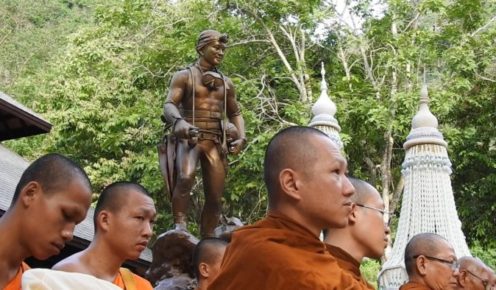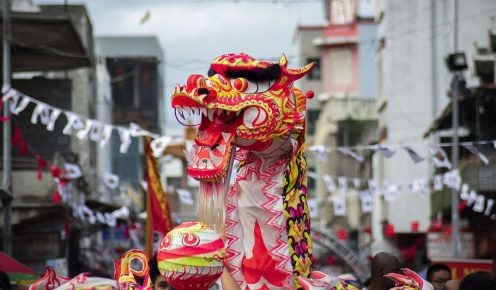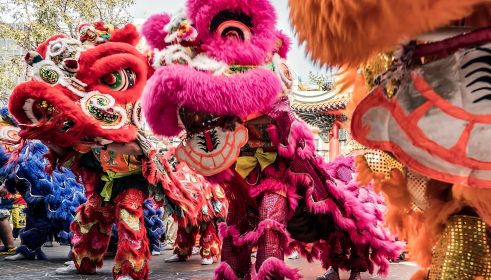The wild Himalayan cherry blossoms in Chiang Rai, Thailand, create a natural spectacle that draws visitors worldwide. With hundreds of blooming cherry trees adorning the streets, this outskirt Chiang Rai district becomes a breathtaking sea of pink petals that captivates the senses.
The unique allure of these cherry blossoms lies in their unexpected presence in a tropical setting, defying expectations and offering a delightful surprise to those who encounter them.
While Japan and Washington DC may be renowned for cherry tree blossoms, Thailand’s Wild Himalayan Cherry trees put on an equally enchanting show, making them a must-see attraction for nature enthusiasts and photography lovers alike.
The blooming wild Himalayan cherry trees in Chiang Rai, primarily from early January to February, offer an extraordinary opportunity to experience the beauty and tranquillity of nature in a truly exceptional setting.
If you’re seeking a captivating natural wonder that defies geographical norms, the wild Himalayan cherry blossoms in Chiang Rai are an unmissable spectacle that promises to leave a lasting impression.
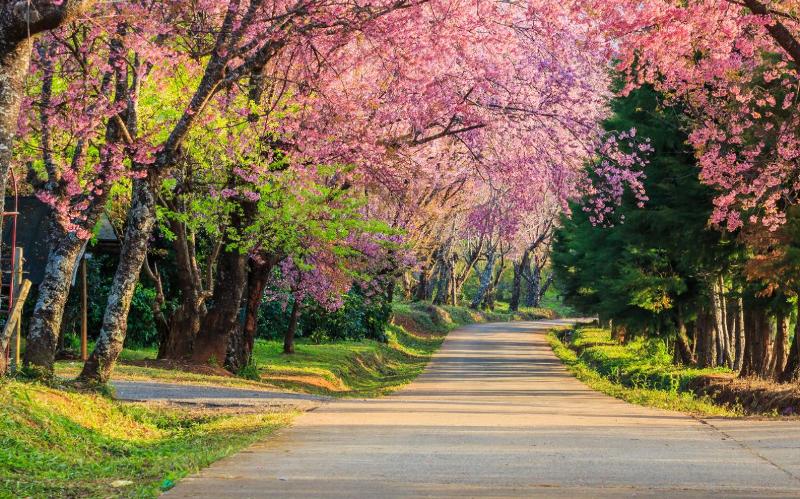
The Beauty of Wild Himalayan Cherry Blossoms
The northern regions of Thailand, particularly Chiang Rai, are adorned with the breathtaking bloom of the Nang Phaya Suea Khrong, a specific variety of wild Himalayan cherry blossoms, also known as the Thai Sakura.
These cherry blossoms add a vibrant and ethereal charm to the landscape, creating a spectacle that captivates locals and visitors alike.
Nang Phaya Suea Khrong: Thai Sakura
The Nang Phaya Suea Khrong boasts unique characteristics that distinguish it from other cherry blossom varieties. With delicate pink petals that exude an enchanting fragrance, these blossoms symbolize purity and are deeply intertwined with Thai cultural traditions.
Their bloom in the region of Chiang Rai is a sight to behold, with over 500,000 cherry trees showering the surroundings with a mesmerizing flurry of petals.
Cultural Significance
In Thai culture, these wild Himalayan cherry blossoms hold profound significance, representing life’s transient nature and impermanence’s beauty.
The delicate yet resplendent display of Nang Phaya Suea Khrong is celebrated during the annual cherry blossom festival, drawing locals and tourists to witness the awe-inspiring spectacle and partake in traditional festivities that honour the blossoms’ cultural importance.
Best Locations to Witness Their Bloom
Chiang Rai offers several ideal locations to experience the full splendour of Nang Phaya Suea Khrong. Notably, the outskirt districts of Chiang Rai and neighbouring Chiang Mai, such as Khun Wang, provide enchanting landscapes adorned with resplendent cherry blossoms during their peak bloom in the early months of the year.
The vicinity comes alive with the vibrant hues of the blossoms, creating an idyllic setting for nature enthusiasts, photographers, and admirers of natural beauty.
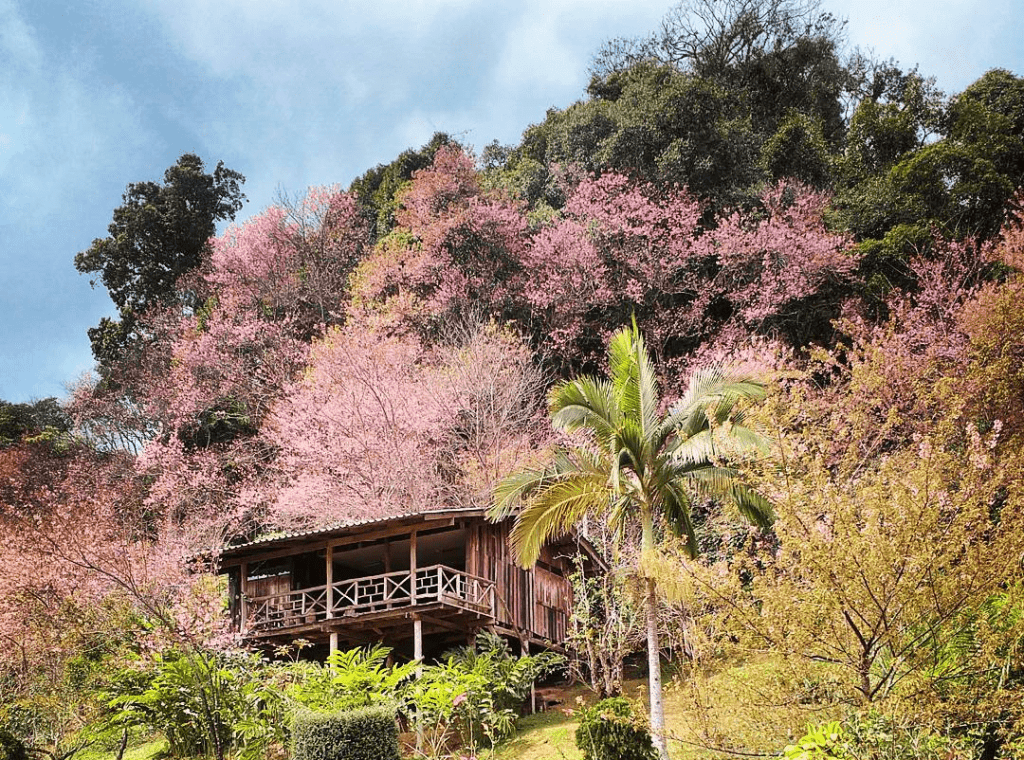
Cherry Blossom Viewing in Chiang Rai
Chiang Rai is home to an enchanting phenomenon often called “Thai Sakura” by locals due to the striking resemblance of the wild Himalayan cherry blossoms to the famous Japanese Sakura.
This comparison adds an irresistible allure to the experience of witnessing these delicate blooms in the heart of Thailand.
Thai Sakura
The local reference to wild Himalayan cherry blossoms as ‘Thai Sakura’ stems from their visual resonance with the beloved Japanese Sakura. When strolling through Chiang Rai’s landscapes adorned with these blossoms, one can’t help but be captivated by the aesthetic parallel with Japan’s iconic cherry blossoms.
The graceful allure of Thai Sakura enhances the charm of Chiang Rai, offering a unique blend of cultures and natural beauty that is truly captivating.
The wild Himalayan cherry trees usually bloom during the winter season in Northern Thailand, and the best time to observe this natural wonder is between December and February.
Planning a trip during these months ensures a higher chance of witnessing the cherry blossoms fully bloom, creating a picturesque display bound to leave a lasting impression.
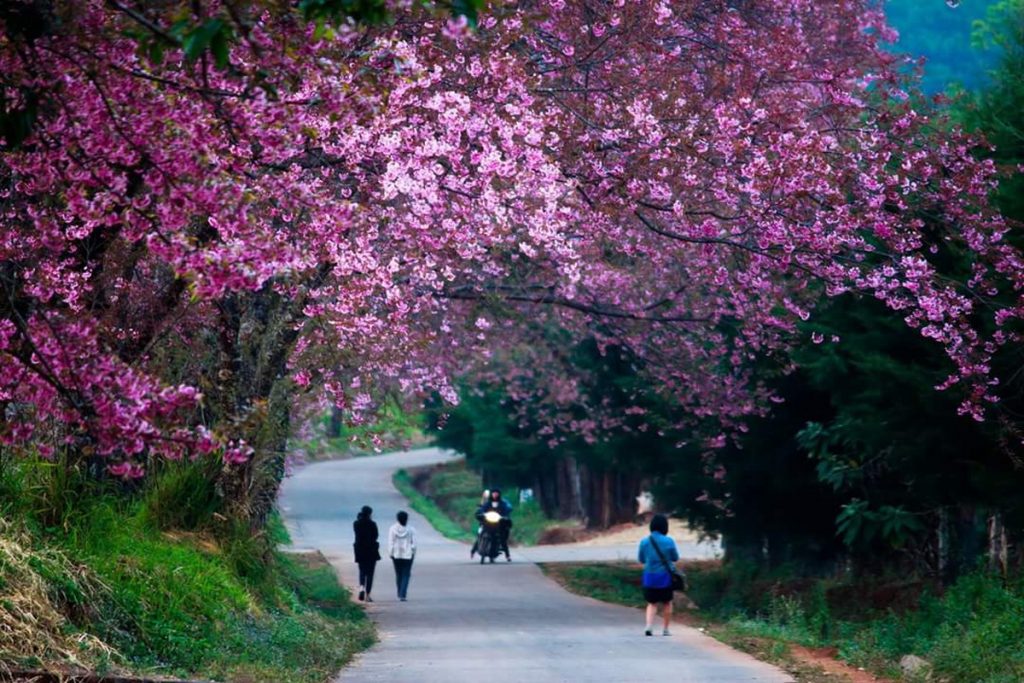
Cultural and Symbolic Significance
Thailand’s northern region, particularly Chiang Rai, has a deep cultural and symbolic connection with the wild Himalayan cherry blossoms, known as Nang Phaya Suea Khrong or Thai Sakura.
The fleeting beauty of these blossoms carries significant cultural and emotional importance, becoming a focal point of various traditions and celebrations.
Rich Cultural Representations
The wild Himalayan cherry blossoms are widely celebrated as part of the region’s cultural heritage. From vibrant festivals to local traditions, these blossoms hold a special place in the hearts of the northern Thai community.
The temporary nature of the blossoms symbolizes the transient yet breathtaking beauty of life and nature. The cultural significance is evident in how locals embrace and cherish this natural spectacle, reflecting the deep-rooted cultural connections with the surrounding environment.
Symbolism of Renewal and Transience
In Thai culture, the blossoming of wild Himalayan cherry trees symbolizes the arrival of spring and the renewal of life. The fleeting nature of the blossoms serves as a poignant reminder of life’s impermanence, encouraging people to appreciate and cherish every moment.
This symbolism is integrated into various cultural practices, where the blossoms are revered as a symbol of hope, renewal, and the ever-changing cycles of life.
Immersive Cultural Experience
The allure of the wild Himalayan cherry blossoms goes beyond visual aesthetics – it offers an immersive cultural experience. Local traditions and customs associated with the blossoms provide a unique lens through which to understand the cultural fabric of northern Thailand.
From traditional rituals to art forms inspired by the blossoms, visitors can partake in a rich tapestry of cultural expressions that honour the symbolic significance of Nang Phaya Suea Khrong.
The cultural and symbolic significance of the wild Himalayan cherry blossoms in Chiang Rai transcends mere visual appeal, weaving into the very essence of northern Thai culture.
By embracing the transience and beauty of these blossoms, locals and visitors alike partake in a cultural journey marked by deep-rooted traditions and timeless symbolism.
By Geoff Thomas

